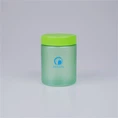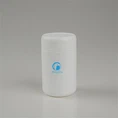In the modern packaging industry, plastic bottles are a common form of packaging for everyday consumer goods, widely used in sectors such as food, pharmaceuticals, and personal care products. Since plastic bottles come into direct contact with the product, ensuring their quality is crucial. From raw material procurement to the production process and final product inspection, every step requires strict oversight. This article will take you through the quality control and testing methods for plastic bottles, from raw materials to finished products.
1.Raw Material Quality Control
The production of plastic bottles begins with the selection of high-quality raw materials. Common plastic materials such as PET and HDPE must meet international standards like FDA, HACCP, and ISO certifications. To ensure the quality of raw materials, manufacturers perform the following tests:
- Material Composition Analysis: This ensures that the plastic pellets are free from harmful substances, such as heavy metals or other toxic components.
- Physical Properties Testing: Tests like melting point, tensile strength, and toughness are conducted to ensure the raw materials remain stable throughout the production process.
- Batch Testing: Every batch of incoming raw materials undergoes batch testing to ensure consistency and prevent contamination.
2.Quality Control During Production
During the production process, quality control is essential to ensure that the final product meets standards. Common quality control measures include:
- Temperature and Pressure Control: Plastic bottles are typically produced using injection molding and blow molding techniques. Strict control of temperature and pressure helps ensure uniformity and strength in the bottle design.
- Inline Testing: On the production line, equipment monitors each bottle's appearance, size, and weight in real-time to prevent any deviations.
- Automated Production Monitoring: Using automated production lines improves efficiency and reduces human error, ensuring consistent product quality.
3.Finished Product Testing Methods
The quality of the finished product must also be carefully tested to ensure the plastic bottles meet market standards and customer needs. Common testing methods for finished products include:
- Dimension Testing: Precision instruments are used to measure the external diameter, neck size, height, and other parameters of the bottle, ensuring that every product is within the acceptable tolerance range.
- Seal Integrity Testing: For products requiring high sealing standards, such as pharmaceuticals and food packaging, seal integrity tests are essential. Methods include air-tight and water-tight testing.
- Strength Testing: To ensure the plastic bottles are resistant to breakage during transportation and storage, manufacturers perform compression and drop tests.
- Visual Inspection: Manual or automated systems inspect the bottle's surface for defects such as bubbles, scratches, or foreign objects.
4.Continuous Quality Tracking
Once the plastic bottles are in the market, manufacturers continue to track their quality to ensure outstanding performance in actual use. Customer feedback and market data help companies optimize production processes and improve product quality over time.
Conclusion
Quality control in plastic bottle production is a multi-step system that involves every aspect, from raw materials and the production process to the finished product. Through rigorous testing methods and continuous quality management, companies can ensure product safety and enhance their brand's market competitiveness. In the packaging industry, maintaining high standards of quality control is essential to earning consumer trust and building a positive reputation.
















